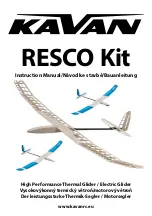
**ON A/C ALL
PROPELLER SYNCHROPHASING SYSTEM − DESCRIPTION AND OPERATION
1.
General
The propeller synchrophasing control circuits provide for automatic speed and phase angle
synchronizing for the propeller system and provide visual indication of circuits powered. The
propeller of engine No. 1 is the reference or master propeller and engine No. 2 propeller is
the controlled or slave propeller.
The synchrophasing mode is manually selectable and must remain switched off during
take−off and landing or when operating the propeller outside the cruise range (constant
speed governing). Propeller speeds must be manually synchronized within 2 1/2 percent
before selecting the synchrophasing mode.
2.
Description
Refer to Figure 1 and Figure 2.
System components consist of a synchrophase control unit, a torque motor, contained in the
PCU of engine No. 2 and two pulse generators, one located on the propeller brush block of
each engine on Pre−Mod 8/0312 aircraft. When Mod 8/0312 is embodied, the pulse
generators are removed from the brush block and mounted in a separate bracket. The
mounting bracket is attached to the propeller shaft seal housing of the engine reduction
gearbox at 5 o’clock (view on front of propeller shaft).
The synchrophase control unit, located on electrical equipment panel No. 1 in the cabin (see
CONTROLLING − DESCRIPTION AND OPERATION, Figure 1) is powered from the 28V dc
right secondary bus, protected by a 5−ampere PROP SYNC (D3) circuit breaker. The power
supply is controlled by a SYNCHROPHASE ON/OFF toggle switch. A SYNCHROPHASE ON
advisory light on the glareshield panel is interconnected with the power supply and advisory
dim and test circuits.
The pulse generators (see Figure 2) are aligned axially with sensor actuators, one located on
the rear face of the propeller bulkhead and slip ring assembly of each engine. The mounting
components of the pulse generators permit the setting of a controlled gap between the sensor
and the sensor actuator. For clearance details, refer to the Propeller Maintenance Manual.
Rotation of the propellers induces a variable frequency ac signal proportional to propeller
speed in each phase sensor circuit. The signals are applied as inputs to the synchrophase
control unit.
D
SERIES 100
AIRCRAFT MAINTENANCE MANUAL
MASTER
EFFECTIVITY: See Pageblock 61−29−00 page 1
61−29−00
Page 1
Dec 20/2004








































